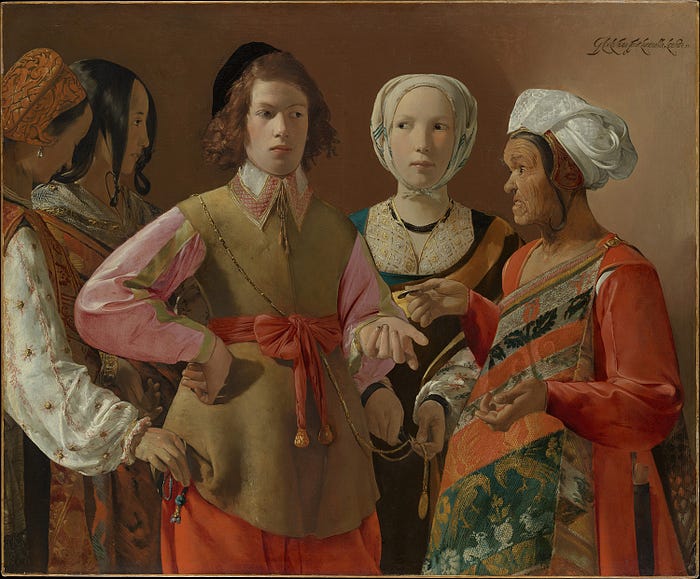Member-only story
How to Read Paintings: The Fortune Teller by Georges de La Tour
A brilliant sting in more ways than one

There are so many noteworthy things about this painting, it’s hard to know where to begin.
Thought to have been made by the French artist Georges de La Tour in around 1630, the painting is from the early part of his career — before he turned his brush to his more characteristic style of candlelit scenes which he is justly famous for.
The Fortune Teller is no less compelling than those later works. It shows a young man having his fortune told by an old woman. She takes a silver coin from his hand whilst he holds out his palm to be read.

Yet there is more than first meets the eye. Behind the fortune teller, an accomplice takes a pair of cutters and snips the man’s gold watch from its chain.
All this is performed with furtive cunning. The eyes dart whilst the mouths remain motionless. The clueless boy looks skeptically at the fortune teller. The gaze of the young woman in the white headscarf glances slyly toward her target. Her unblemished features act as the perfect foil to the ruse that’s taking place.

But that’s not the end of it. On the man’s left side, two more women conspire to pull what presumably is the man’s purse from his trouser pocket. One of the women gently lifts the item; the other has her hand ready to receive it and spirit it away.

The women are supposed to be gypsies — conforming to the unfavourable stereotype of deceitful and thieving travellers. The game being played here is one of guileless opportunism.
Wearing a military-style doublet and a silk waist tie, the young man has an air of pretension. His elbow is sticking out and elevated in a manner that the…
